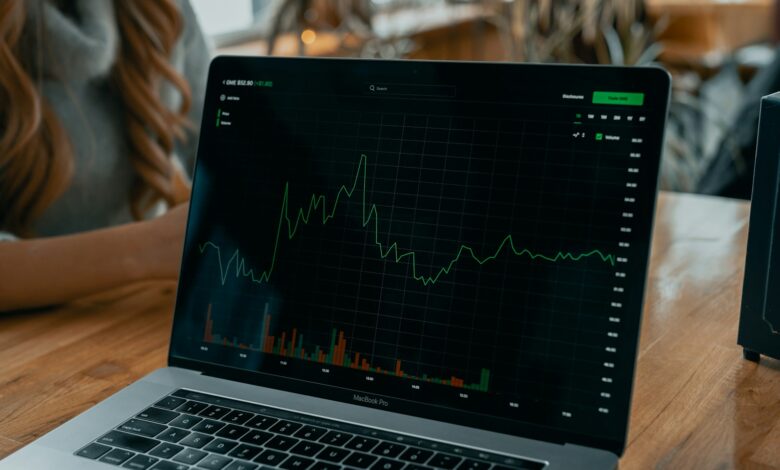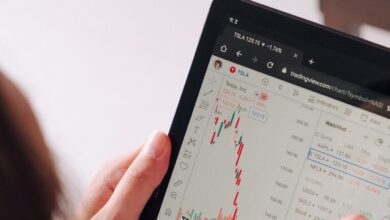Circular economy – waste reduction opportunities

Maximizing resource utilization by enhancing material lifecycle extends product value while limiting disposal volumes. Implementing advanced sorting technologies and promoting industrial symbiosis significantly increase the reuse rate of secondary inputs, thereby decreasing raw material extraction costs and environmental impact.
Incorporating closed-loop recycling streams within production cycles reduces dependency on virgin resources and mitigates landfill accumulation. Businesses that integrate modular design facilitate component recovery, improving material recirculation and driving operational savings through lowered input volatility.
Adopting innovative processing methods such as chemical recycling or upcycling unlocks additional value from residual streams previously considered non-recoverable. These strategies create new revenue channels by transforming discarded outputs into high-quality feedstocks, aligning profitability with sustainability goals.
Quantitative assessments reveal that industries adopting regenerative practices can achieve input reduction rates exceeding 30%, translating into substantial cost avoidance and enhanced resilience against supply chain disruptions. Strategic collaboration across sectors amplifies these benefits by optimizing resource flows at regional scales.
Investment Insights: Enhancing Sustainability Through Resource Optimization
Allocating capital towards technologies that advance material reuse and lifecycle extension presents significant potential for long-term value creation. By prioritizing systems that maximize resource recirculation, investors can tap into markets driven by regulatory pressures and consumer demand for environmental accountability. For instance, industrial symbiosis platforms leveraging blockchain to track product provenance enhance transparency, reducing disposal volumes while increasing asset longevity.
Data from the Ellen MacArthur Foundation indicates that adopting regenerative practices in manufacturing could reduce global material consumption by up to 32% by 2030, which directly translates into decreased input costs and waste stream burdens. Integrating efficient recycling processes within supply chains not only mitigates environmental liabilities but also supports stable raw material prices amid geopolitical uncertainties.
Technological Advances Enabling Material Lifecycle Management
Distributed ledger technologies offer immutable tracking of components throughout their service life, enabling precise identification of reusable elements and facilitating secondary market exchanges. This approach significantly improves operational efficiency by minimizing resource extraction and processing requirements. Companies utilizing smart contracts to automate buy-back schemes demonstrate measurable declines in landfill contributions, optimizing both cost structures and sustainability metrics.
A notable case study involves a leading electronics manufacturer implementing blockchain-enabled reverse logistics; this initiative led to a 25% increase in recovered materials within two years. Such gains underscore the financial viability of investing in digital solutions designed to streamline material flows and uphold circular principles at scale.
Integration of advanced sorting algorithms powered by artificial intelligence further refines recycling efficacy. Automated separation enhances purity levels of reclaimed inputs, thereby elevating their market value. Investors should consider enterprises combining AI with robotics as these innovations reduce manual labor costs and improve throughput quality–factors critical to competitive positioning.
The convergence of economic incentives and environmental stewardship is evident in regions enforcing extended producer responsibility (EPR) regulations. Compliance demands encourage firms to innovate around product design favoring disassembly and component recovery. Capital allocation toward companies excelling in modular architecture offers exposure to growth sectors aligned with evolving policy frameworks promoting sustainable production models.
Identifying High-Impact Waste Streams
Prioritizing streams with significant material volume and low recovery rates maximizes gains in resource conservation and sustainability. Industrial by-products such as construction debris, electronic scrap, and food residues present critical targets due to their high generation levels and potential for enhanced processing efficiency. Data from the United Nations Environment Programme indicates that approximately 40% of global waste originates from construction and demolition activities, yet recycling rates remain below 30%, revealing substantial scope for improved material recirculation.
Manufacturing sectors generating composite materials often face challenges in sorting and reprocessing, limiting resource reclamation. For instance, electronic waste (e-waste) contains valuable metals like gold, silver, and palladium; however, only around 20% undergoes formal recovery processes globally. Implementing advanced sorting technologies based on blockchain-enabled traceability systems can improve transparency and incentivize circular flows by ensuring accountability across supply chains.
Technological Enhancements in Recovery Mechanisms
Adopting sensor-based separation combined with AI algorithms enhances selective extraction of reusable components from mixed input streams. A case study involving a European facility demonstrated a 25% increase in metal recovery efficiency after integrating machine learning models to optimize sorting parameters. This not only reduces landfill dependency but also lowers energy consumption associated with primary resource extraction.
Organic residuals represent another significant category with opportunities for valorization through anaerobic digestion or composting technologies. The Food and Agriculture Organization reports that up to one-third of produced food is discarded globally, contributing substantially to greenhouse gas emissions if mismanaged. Deploying decentralized biogas plants can simultaneously address energy needs while managing biodegradable matter sustainably.
- Textile remnants: With fast fashion driving high turnover rates, recovering fibers through chemical recycling offers pathways to regenerate raw materials without relying exclusively on virgin inputs.
- Plastic fractions: Identification of polymer types via spectroscopy facilitates targeted mechanical recycling or feedstock recycling approaches aligned with product design for recyclability principles.
The integration of distributed ledger technologies provides immutable records of material provenance and treatment history, enabling enhanced regulatory compliance and fostering trust among stakeholders. Smart contracts linked to verified processing steps can unlock financial incentives aligned with sustainable handling practices across industrial ecosystems.
A systematic focus on these impactful categories fosters resource-efficient practices that align economic incentives with environmental goals. Identifying stream-specific bottlenecks and deploying tailored technological solutions accelerates transition towards resilient material cycles supporting long-term viability within diversified markets.
Investing in Material Reuse Systems
Allocating capital to material reuse infrastructures enhances operational efficiency by extending the lifecycle of resources and minimizing input demand. Industries integrating advanced sorting technologies and modular design principles have reported up to 30% decreases in raw material procurement costs within five years, demonstrating tangible economic benefits. For instance, automotive manufacturers employing closed-loop recovery systems achieve significant material reclamation rates, reducing dependency on virgin inputs and stabilizing supply chains against market volatility.
Investment strategies focusing on resource recirculation contribute substantially to sustainability metrics by lowering environmental footprints associated with extraction and processing. Data from recent case studies indicate that aluminum reprocessing can consume 95% less energy compared to primary production, directly influencing carbon emission targets. Financial instruments targeting these sectors benefit from regulatory incentives linked to stringent environmental compliance standards across Europe and Asia, improving risk-adjusted returns for stakeholders.
Technological Advances and Market Dynamics
Emerging blockchain applications facilitate transparent tracking of materials throughout their reuse cycles, ensuring provenance verification and enhancing trust among supply chain participants. Smart contracts automate compliance checks and incentivize participation through tokenized rewards, creating novel financial ecosystems around secondary resource utilization. This innovation aligns with evolving investor preferences toward verifiable impact investments, opening new avenues for portfolio diversification focused on sustainability.
Comparative analysis reveals that companies prioritizing recycling infrastructure investment outperform peers by maintaining lower volatility amid commodity price fluctuations. For example, firms adopting digital twin simulations to optimize refurbishing processes report improved capital allocation efficiency and accelerated product turnaround times. Anticipated regulatory tightening regarding material stewardship further supports the strategic value proposition of funding material reuse platforms as part of a resilient asset allocation framework.
Scaling Industrial Symbiosis Models
To enhance resource utilization and minimize environmental footprints, expanding industrial symbiosis networks requires integrating advanced data exchange platforms that enable real-time identification of material flows between enterprises. This approach fosters improved collaboration among industries, allowing by-products or secondary materials from one facility to serve as inputs for another, increasing throughput while lowering operational costs. For instance, the Kalundborg industrial park in Denmark demonstrates how sharing steam, water, and residual products can lead to a 20% improvement in overall resource efficiency.
Utilizing blockchain technology offers a robust solution to verify traceability and authenticity of exchanged resources within these networks, enhancing transparency and trust among stakeholders. Smart contracts automate transactions related to recycling streams and energy sharing, reducing administrative overhead and facilitating scalable growth. Such digital infrastructure supports sustainable business models by ensuring compliance with regulatory standards and optimizing asset utilization across complex supply chains.
Technical Enablers for Expansion
The deployment of IoT sensors combined with AI-driven analytics allows continuous monitoring of process outputs, enabling precise matching of surplus materials with potential consumers. This technological synergy increases operational precision, decreases the likelihood of underutilized residues, and maximizes the recovery rate for reusable substances. A case study from the steel manufacturing sector reports a 15% reduction in raw material demand after implementing sensor-guided material exchanges within their production ecosystem.
Furthermore, adopting modular infrastructure designs facilitates rapid adaptation to fluctuating input characteristics, promoting flexibility in resource reuse strategies. Modular units can be scaled up or down depending on availability or demand variations without significant capital expenditure increments. Such adaptability is critical for replicating successful symbiotic frameworks across diverse industrial contexts while maintaining sustainability benchmarks.
- Integration with regional waste management systems enhances collection logistics for recyclable streams;
- Standardization of material quality parameters ensures compatibility between participants;
- Incentive mechanisms aligned with environmental policies promote active engagement from private sectors;
- Collaborative platforms enable knowledge sharing and joint innovation efforts tailored to local conditions.
Regulatory support plays a pivotal role in accelerating adoption rates by providing clear guidelines on permitted exchanges and establishing metrics for evaluating environmental benefits. Countries implementing extended producer responsibility (EPR) schemes observe increased participation in collaborative reuse initiatives as companies seek to minimize end-of-life liabilities through shared resource loops. The European Union’s Circular Economy Action Plan exemplifies such policy frameworks encouraging cross-sectoral integration toward closed-loop systems.
The scalability of these models hinges on combining innovative technologies with tailored economic incentives that balance profitability alongside ecological preservation goals. By prioritizing system-wide efficiency improvements instead of isolated waste disposal methods, industries can transition toward regenerative cycles that conserve resources more effectively while driving competitive advantages through optimized input usage.
Evaluating Circular Supply Chains
Optimization of supply networks requires prioritizing the elimination of byproducts and maximizing material lifecycle through reuse and regeneration. Integrating closed-loop systems enhances resource allocation, reducing dependency on virgin inputs while boosting operational sustainability. For instance, companies employing advanced tracking technologies in raw material flows report up to 30% improvement in input utilization efficiency.
Quantitative assessment of recycling initiatives within production cycles offers valuable insights into environmental impact mitigation and cost savings. Data from manufacturing sectors indicate that incorporating secondary materials can lower energy consumption by 25%, contributing directly to lower carbon emissions and improved compliance with emerging regulatory frameworks targeting sustainable practices.
Technical Implementation and Metrics
Key performance indicators for evaluating these supply chains include material circularity scores, throughput rates of reclaimed inputs, and lifecycle greenhouse gas emissions. Blockchain technology is increasingly utilized to ensure transparency across value chains, enabling immutable records of product provenance and end-of-life handling. A notable example is the deployment of decentralized ledgers in automotive parts manufacturing, which enhanced component traceability and facilitated efficient remanufacturing processes.
Efficiency gains also stem from leveraging predictive analytics powered by machine learning algorithms that forecast demand fluctuations and optimize inventory levels accordingly. This approach minimizes excess stock generation and associated environmental burdens. Case studies reveal that firms adopting such data-driven strategies reduce raw material waste streams by approximately 18%, translating into both economic benefits and ecological advantages.
Regulatory shifts toward stricter resource conservation requirements incentivize adoption of regenerative procurement models that emphasize supplier collaboration for enhanced recyclate quality. Organizations aligning their sourcing policies with these mandates improve resilience against market volatility in commodity prices. Financial analyses demonstrate that investments in sustainable supply chain infrastructures yield return on investment periods averaging three to five years, underscoring viable economic rationale alongside environmental stewardship.
Financing Innovative Recycling Technologies: Strategic Insights and Future Trajectories
Allocating capital towards advanced recycling methodologies significantly enhances resource utilization and operational throughput, directly impacting sustainability metrics. Integration of blockchain-enabled smart contracts facilitates transparent funding flows, ensuring accountability and optimized allocation in projects targeting material lifecycle extension. For instance, tokenized asset-backed securities can underwrite investments in chemical recycling plants, boosting the conversion efficiency of complex polymer waste streams.
Investment frameworks that prioritize circular material loops demonstrate superior resilience amid regulatory tightening around landfill diversion targets. Leveraging decentralized finance (DeFi) platforms enables fractionalized participation from diverse stakeholders, thus broadening the financing base for novel technologies such as enzymatic depolymerization and automated sorting using AI-powered robotics. These approaches collectively drive continuous improvement in resource conservation and emissions abatement.
Key Technical Implications and Forward-Looking Perspectives
- Resource Optimization: Deploying distributed ledger technology to track feedstock provenance reduces contamination risks, enhancing secondary raw material quality and reducing input variability for recyclers.
- Efficiency Gains: Financing models incorporating real-time performance data via IoT sensors enable adaptive funding tied to throughput improvements, incentivizing innovation in mechanical recycling processes.
- Sustainability Metrics: Transparent reporting facilitated by blockchain accelerates compliance with evolving ESG mandates, attracting institutional investors focused on long-term environmental impact.
- Market Expansion: Tokenization lowers entry barriers for smaller enterprises developing breakthrough recycling catalysts or bio-based recovery systems, fostering diversification within the sector.
The trajectory of financial innovation underpinning the development of advanced reclamation techniques signals a paradigm shift toward integrated ecosystems where capital flows are dynamically aligned with process efficacy and environmental outcomes. Emerging regulatory regimes emphasizing transparency and traceability will further catalyze investment into scalable solutions that maximize materials’ life cycles. Consequently, stakeholders equipped with comprehensive analytics and blockchain-enabled verification stand poised to redefine sustainability benchmarks while capturing value across multiple layers of the supply chain.
This convergence of cutting-edge financing instruments with technological breakthroughs presents a compelling blueprint for scaling sustainable material management practices globally. Prioritizing strategic deployment of funds into precision recycling infrastructure will be instrumental in meeting ambitious climate goals while unlocking new economic value streams derived from enhanced resource recirculation efficiencies.






